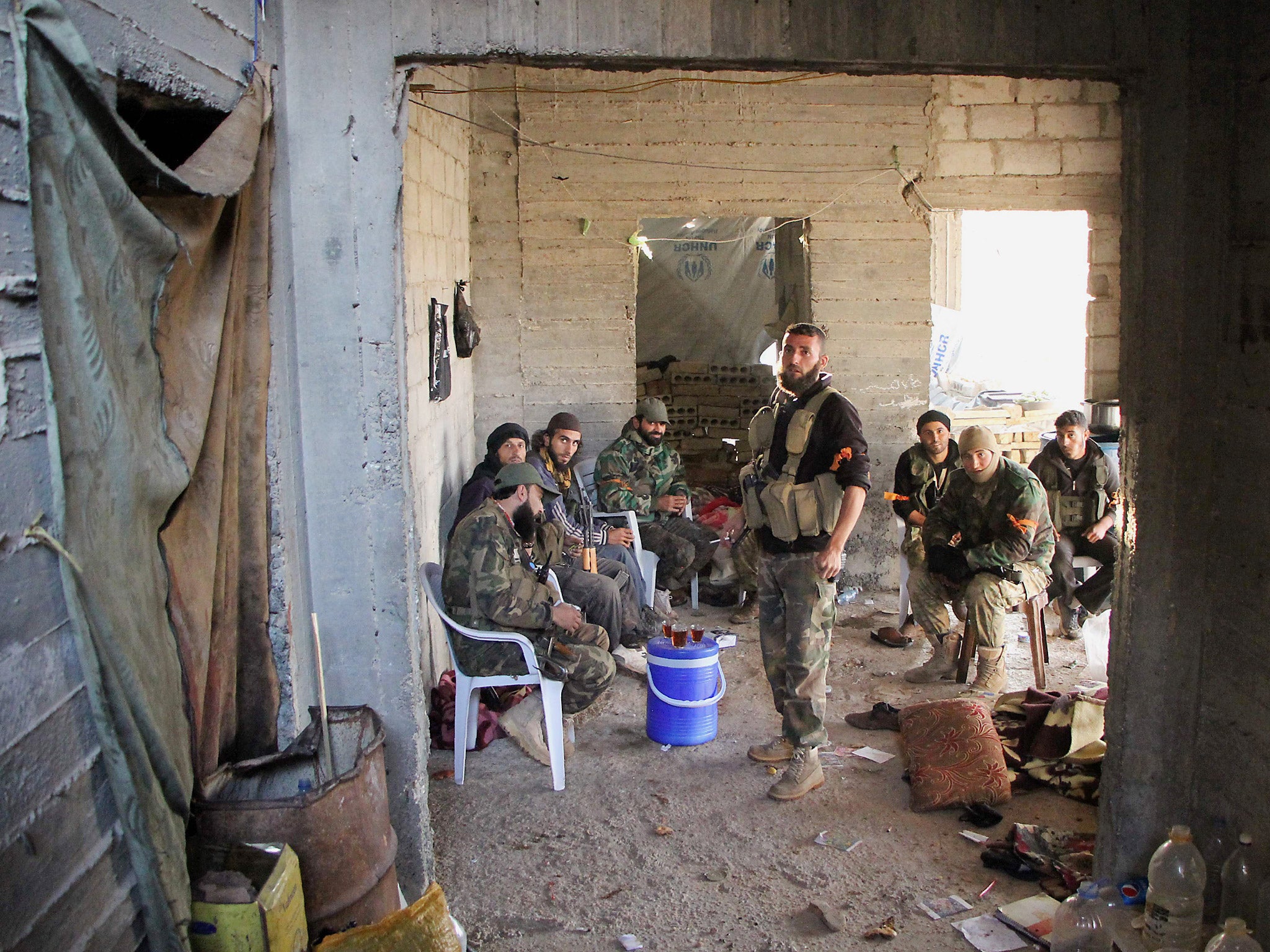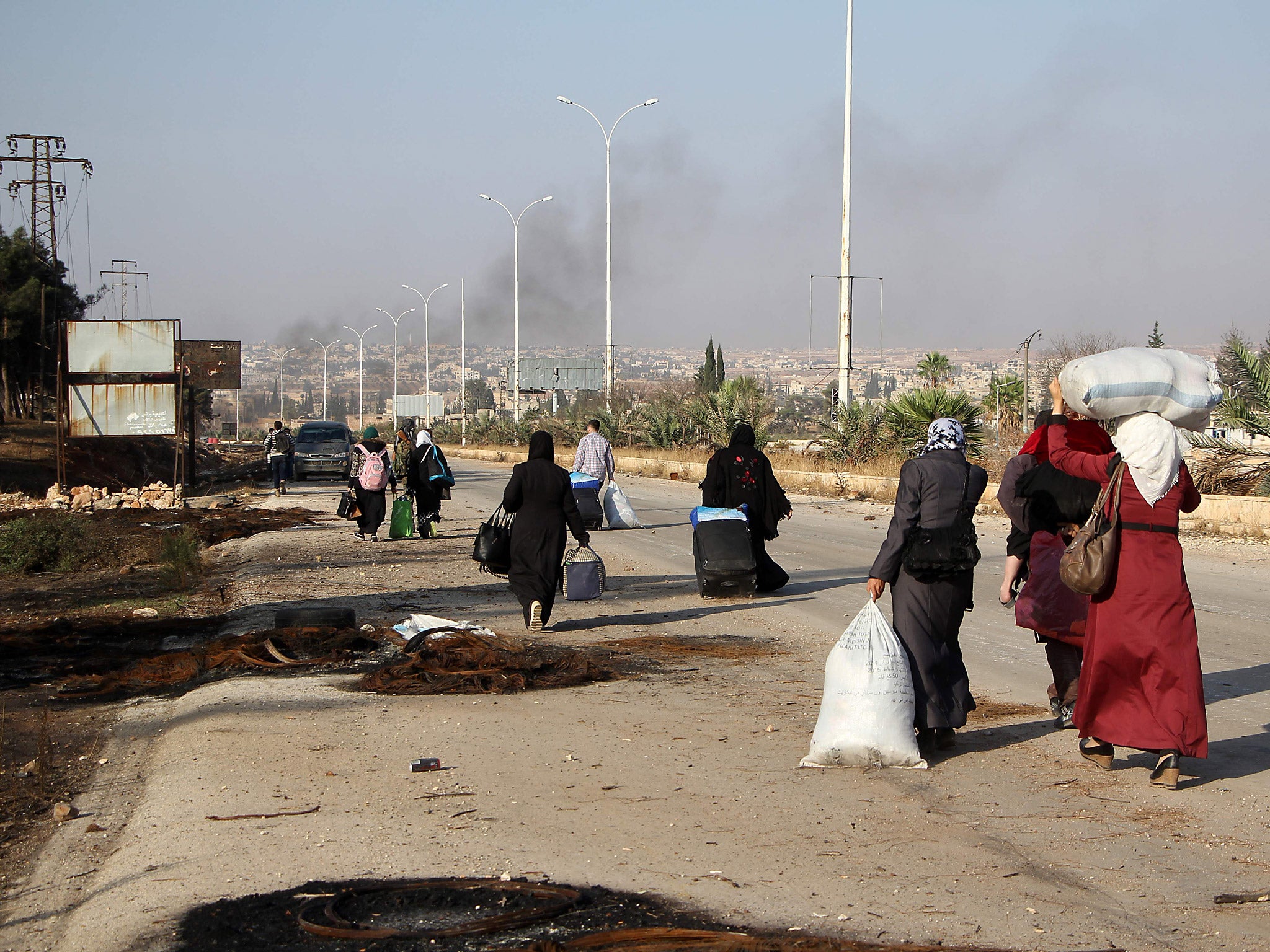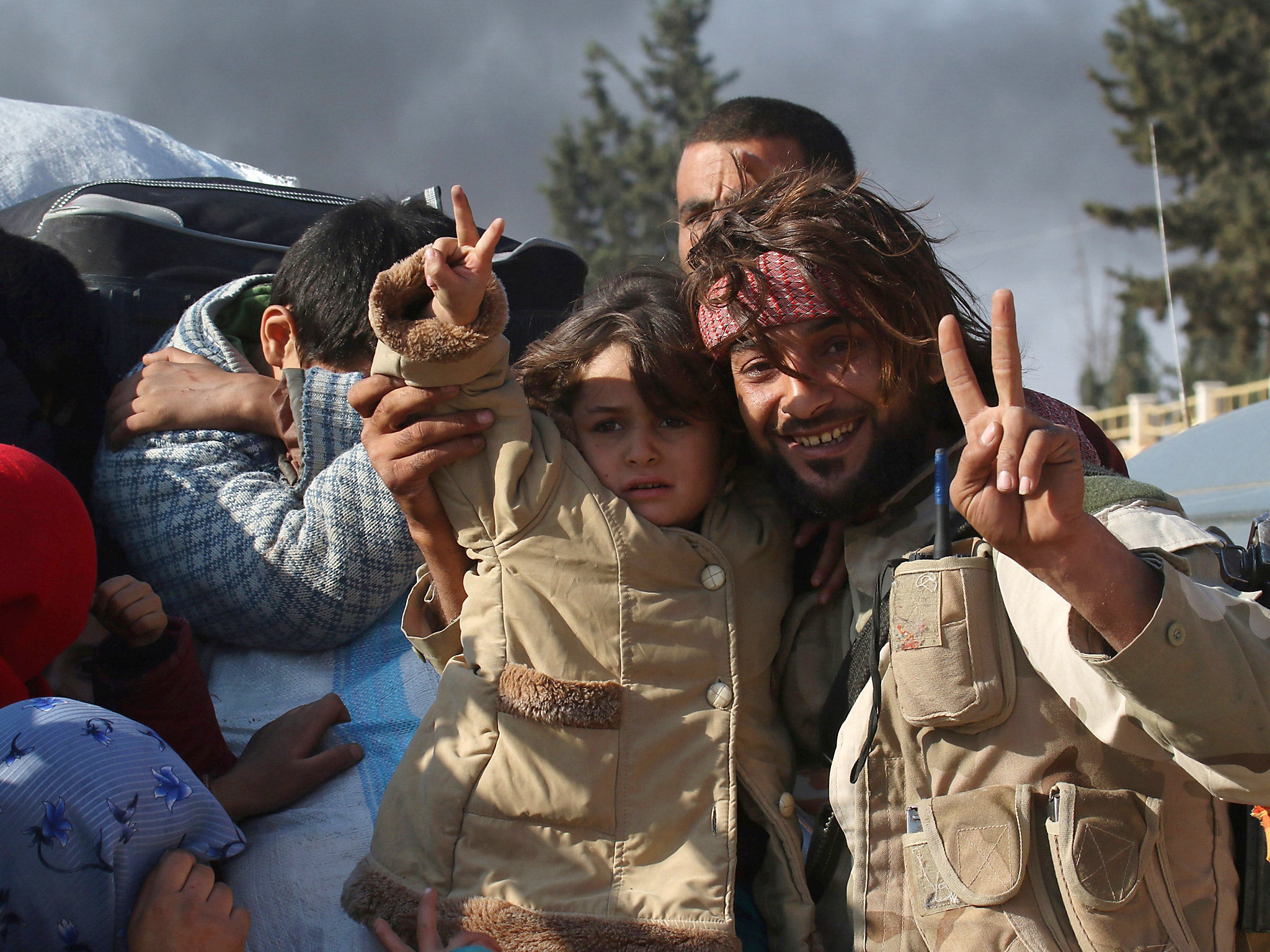What it's really like to be in the middle of the battle for Aleppo
The battle for the city has opened up, with fire arriving not only from the east but from south-west – where the al-Nusra Front and some of its Islamist allies still hold territory. But this isn't quite the storm of steel the world's media would have you believe

Your support helps us to tell the story
From reproductive rights to climate change to Big Tech, The Independent is on the ground when the story is developing. Whether it's investigating the financials of Elon Musk's pro-Trump PAC or producing our latest documentary, 'The A Word', which shines a light on the American women fighting for reproductive rights, we know how important it is to parse out the facts from the messaging.
At such a critical moment in US history, we need reporters on the ground. Your donation allows us to keep sending journalists to speak to both sides of the story.
The Independent is trusted by Americans across the entire political spectrum. And unlike many other quality news outlets, we choose not to lock Americans out of our reporting and analysis with paywalls. We believe quality journalism should be available to everyone, paid for by those who can afford it.
Your support makes all the difference.It was the rain that should have told us. High-altitude jets had flown over Aleppo the previous evening and, just occasionally, we heard their bombs exploding, far away in the countryside beyond the city. Then a soft, warm shower drifted over the ruins downtown and coated the streets and apartment blocks of western Aleppo with drizzle, and there was – for this city, at least – a strange silence. Dawn brought a brown, overcast sky through which no Russian or Syrian pilots could see the ground unless they chose to fly at low level through the downpour, which they never do.
And that was when the bombardment of western Aleppo began. The mortars and shells broke across the city in a steady and growing rumble of sound that left only one question in our minds. Amid the ruins of eastern Aleppo, with its tens of thousands of trapped civilians, where on earth did its few thousand largely Islamist fighters, get all this ammunition? Syrian army long-range artillery, high on the hill behind the old Meridien hotel, banged away at the eastern horizon where smudges of grey smoke began to curl into the dun-coloured sky.
It was not quite the storm of steel that the media – many in far-away Beirut – would have the world believe. The battle for divided Aleppo has been fought for too long and its people besieged and then rebesieged – in both east and west – that the front lines have congealed into the square miles of dust and ruins that are now almost impassable. You might join the chorus of exaggeration about Srebrenica or Grozny, but Stalingrad this is not.
Yet it shook both the civilians and the regime in the west of the city. Just after breakfast, as I was gazing eastwards through the rain towards the ancient citadel, there was a sudden clap of sound as a shell bashed into the governor’s modern office block. I saw bits of the side of the building flying into the air. The Aleppo governor, whose residence is itself sealed off by anti-car-bomb concrete barricades, was safe in Damascus where he was meeting Bashar al-Assad and other regional leaders. Others were not so fortunate.
By midday, Syrian radio was announcing seven dead – a little, almost insignificant figure when you remember the new graves in the packed cemeteries of this place – but the bombardment had a dramatic effect in the streets. The loudspeaker on the minaret of a mosque scarcely 100 yards away clicked – the electrical “click” and hiss of the sound system is the prelude to every supercharged prayer across the Middle East – and a voice shouted: “They are attacking. They are attacking. They are coming from the north, from Zahra, from Bin Yamin and towards al-Hamadaniyeh.”
And this was the first indication anyone in the streets was given that the incoming fire was not only arriving from eastern Aleppo but from south-west of the city, from the fields and ruined factories and broken sewage farms where Nusra and some of its Islamist allies still hold territory that snakes all the way north to the Turkish frontier – from which weapons regularly arrive to increase this feast of violence.

Wars inspire their own Hollywood version of reality and, in a darkened Ba’ath party headquarters with the rumble of explosions outside, I was to hear another rumour of war that will surely acquire its own mystique in the days to come. American planes had been seen dropping arms supplies into eastern Aleppo, Syrian jets had warned them off but some parachutes had been seen. “I think there is a video,” an otherwise extremely rational and intelligent official added.
There was, of course, no video – there never is – nor are Syrian MiGs in any position to challenge US air power. Washington is not going to provoke Russia by sending its fighter-bombers from Turkey over Aleppo. Besides, given the American propensity for inaccuracy, any parachutes would surely have missed their target.
But how else to account for the sudden profligate use of so much ammunition? “Tunnels,” a Syrian army man was to mutter later. In Homs, Damascus and other Syrian towns, the tunnellers have proved they can move men and guns in and out of sieges.
But then came the Grad rockets, showers of them, from the south-west – from miles outside the city – new missiles with an extended range of 40km according to the Syrian military, among the first of which struck a car in the Hamadaniyeh district, killing the driver and wounding his wife. At the airport south-west of the city, which exists in a bubble of government-held territory almost surrounded by Nusra fighters hiding in four-year old ruins, I was shown the impact of the Grad rockets on the runways, not far from the small MiG fighter base.
No one there was in any doubt that the missiles had just come from Turkey – which is quite possible since they clearly didn’t arrive from Brazil or Uruguay – and by noon next day, Syria’s version of Rommel, the tactically brilliant but equally ruthless General Suheil “Tiger” Hassan, arrived from Hama to take charge of the battle. Hassan commands only the most dangerous battles in Syria and he had been forced to leave an equally violent – some might say more strategically important – conflict in Hama province to the south where some 7,000 armed men have been confronting the Syrian army and trying to break the desert road and main supply route to Aleppo, which is the only way for soldiers, supplies, food and civilians to reach the west of Syria’s largest city. It was General Hassan who smashed open this new road almost three years ago, destroying dozens of villages as he did so. He wasn’t going to let it fall now.

For the “rebels” – that amorphous word that covers a multitude of sins and whom the Syrian government always calls “terrorists” with Blair-like enthusiasm – were trying to surround the regime forces in western Aleppo who still surrounds the “rebels”/“terrorists”/“fighters”/ “Islamists” (delete as required) in eastern Aleppo. By Saturday, the Syrian government was quoting alleged “rebel” broadcasts and social media to the effect that up to 500 fighters opposed to the government had been killed – which sounded about as realistic as the American general who was boasting at almost exactly the same time that between 800 and 900 Isis fighters had been killed around Mosul.
In Aleppo, there were also reports of 5,000 wounded. And there was an exodus from the suburbs close to the airport as civilians sought shelter with relatives deeper inside western Aleppo. And then the United Nations High Commissioner For Refugees and its Syrian staff and their dependants turned up at the old Meridien to seek shelter from the shells that were falling around their compound, children in arms, packed suitcases dragged through the metal detectors at the door, another little exodus to remind us all that another little chapter in the Aleppo war had just been opened.
Join our commenting forum
Join thought-provoking conversations, follow other Independent readers and see their replies
Comments